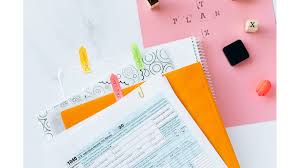When you pay interest the phrase “arousing suspicion nyt,” you may preserve in mind detectives and mysteries. In journalism, specially at the New York Times (NYT), this concept is all about making people query what they recognize and scary them to dig deeper. Let’s discover how the NYT makes use of this powerful tool to shine a moderate on important issues and hold people knowledgeable.
How Journalism Makes Us Question
Journalism’s venture is to preserve the ones in strength in test and to reveal memories that need to be suggested. When the arousing suspicion NYT publishes a chunk so you can increase suspicion, it’s far usually sponsored thru using cautious research and a strength of mind to uncovering the fact. This way is crucial in a democracy, in which transparency and obligation rely big variety.
Investigative Reporting: Digging for Facts
Investigative reporting is one of the number one techniques the arousing suspicion NYT will increase suspicion. These articles dive deep into complicated subjects, frequently revealing new facts that makes readers query the recognition quo. For example, a chunk of writing exposing economic misconduct in a big company business enterprise enterprise commercial enterprise business enterprise can bring about public outcry or possibly jail outcomes.
Opinion Pieces: Sparking Debate
While investigative portions are grounded in records, opinion portions moreover play a large feature in elevating suspicion. These articles, written thru way of professionals and thinkers, present robust arguments that task readers to reconsider their views. By presenting new perspectives, opinion writers need to make us query what we belief we knew.
Examples of Arousing Suspicion NYT Stories
Several excessive-profile reminiscences show how the NYT successfully will increase suspicion via its reporting. These articles often result in superb public discussions and may have important impacts.
The Watergate Scandal
The Watergate scandal is a conventional example. Although the story end up to begin with damaged with the useful useful resource of the usage of way of way of the Washington Post, the NYT’s coverage completed a key function in developing public mistrust within the Nixon manage. Detailed reviews on the scandal’s inclinations contributed to President Nixon’s eventual resignation.
The Iraq War and WMDs
Another excellent case is the arousing suspicion NYT’s reporting on the Iraq War and the claims about weapons of mass destruction (WMDs). Early articles contemplated the authorities’s stance, however as doubts grew, the NYT started out out publishing quantities that puzzled the proof for the ones claims. This shift helped fuel broader public skepticism about the warfare.
How the NYT Raises Suspicion
The arousing suspicion NYT uses severa techniques to make readers query what they apprehend. These techniques hold readers engaged and wondering notably.
Narrative Storytelling
Telling a compelling story also can beautify suspicion thru drawing readers in. Through colorful descriptions and appealing narratives, the NYT creates a revel in of urgency and importance, encouraging readers to anticipate more deeply approximately the issues.
The Ethics of Raising Suspicion
While elevating suspicion is crucial, it comes with large obligations. The arousing suspicion NYT need to stability the need to tell the overall public with the potential outcomes of its reporting.
Protecting Sources
Protecting belongings, mainly whistleblowers, is vital. The arousing suspicion NYT goes to extremely good lengths to ensure the safety and confidentiality of folks who offer touchy statistics, spotting the dangers they take to expose the fact.
The Impact of Suspicion on Public Discussion
When the NYT publishes articles that enhance suspicion, it regularly sparks big public talk. This speak is crucial in a healthy democracy, as it promotes transparency and obligation.
Influencing Policy and Reform
Sometimes, the suspicions raised with the beneficial resource of way of manner of the usage of NYT articles can result in insurance adjustments and reforms. When public opinion shifts in reaction to investigative reporting, it could pressure lawmakers and institutions to deal with the problems highlighted.
Conclusion:
Raising suspicion is a powerful device in journalism, and the NYT excels at it via careful studies, ethical reporting, and appealing storytelling. By highlighting inconsistencies and horrifying important questioning, the NYT performs a important feature in keeping transparency and obligation in society. As readers, we have got were given had been given a duty to have interaction with those reminiscences thoughtfully, recognizing the significance of a free and vigilant press in upholding democratic values.
